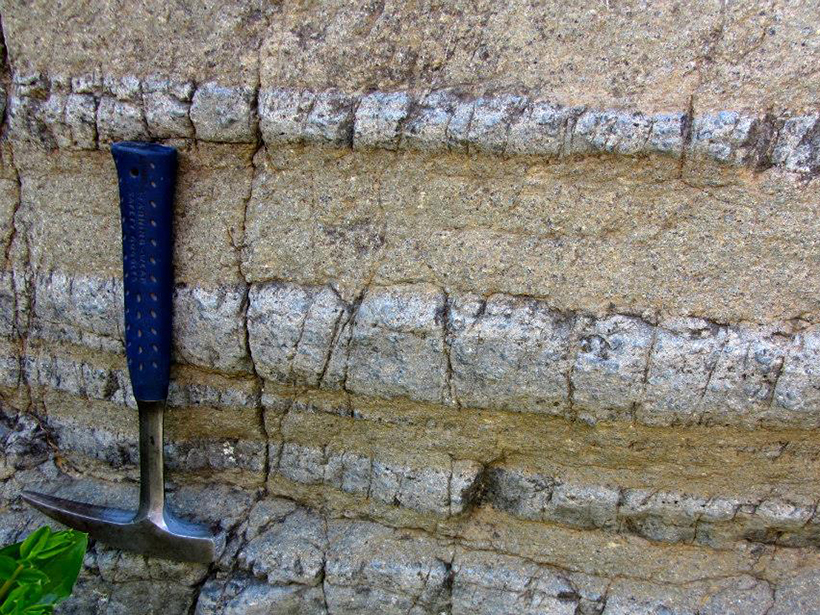Source: Journal of Geophysical Research: Solid Earth
The bulk of the Earth’s volume is composed of the mantle—the layer of silicate rocks sandwiched between the dense, hot core and the thin crust. Although the mantle is mostly solid rock, it’s generally viscous: Slowly over millions of years, the material within the layer drifts, driving tectonic plates together and apart. Thus, the mantle’s influence can be seen on the planet’s surface on both large and small scales—from fueling volcanoes and seafloor expansion down to the composition and characteristics of igneous rocks.
Most of the Earth’s mantle is composed of peridotite, an igneous rock rich in the mineral olivine. But previous research suggests that melted mantle pyroxenites—igneous rocks composed primarily of pyroxenes, minerals that contain 40% more silicon than olivine—may also be a source of oceanic lavas. New research by Lambart et al. seeks to better model how pyroxenites influence melting that occurs in the mantle.
Pyroxenites make up between 2% and 10% of the upper mantle, depending on the region, but determining the amount of pyroxenites in hot mantle plumes to the surface requires more information. Researchers have found that at the same pressure, pyroxenites tend to melt at lower temperatures than peridotites, which means that any pyroxenites in peridotite-rich mantle regions might make up a larger portion of the liquid material than their small fraction of mantle bulk would suggest.
To understand how the varying source materials in the mantle contribute to the characteristics of igneous rocks at the surface, researchers need to understand the melting characteristics of pyroxenites—a broad and variable group of rocks. That variability in composition makes predicting the phase changes of pyroxenites more complicated. And that complexity means that current models of mantle melting, like pMELTS, overestimate the temperature range over which pyroxenites melt. So the authors created a new parameterization for mantle melting models that seeks to rectify the problem.
The new parameterization accounts for the fact that temperature, pressure, and the bulk chemical composition of the rocks together determine their near solidus temperature. The authors used a compilation of 183 experiments on pyroxenites with 25 varying chemical compositions, carried out over pressures from 0.9 to 5 gigapascals (GPa) and temperatures ranging from 1150°C to 1675°C. They charted the temperature when 5% of the materials was molten and the temperature at which clinopyroxene, a dominant mineral in pyroxenites, in each sample was gone—parameters that are easy to detect accurately and consistently.
This analysis helped the authors create a new model based on experimental data from the literature, dubbed Melt-PX, which predicts the temperature at which the pyroxenites start to melt within 30°C and the amount of melting within 13%. It showed that at low pressure—less than 1 GPa—pyroxenites melt at lower temperatures than peridotites, but as pressure increases, more and more pyroxenites melt at higher temperatures than peridotites.
The new model will be a useful tool to understand magma composition, ultimately giving researchers a window into the Earth and the source of oceanic basalts. (Journal of Geophysical Research: Solid Earth, doi:10.1002/2015JB012762, 2016)
—Kate Wheeling, Freelance Writer
Citation:
Wheeling, K. (2016), A better model for how the mantle melts, Eos, 97, https://doi.org/10.1029/2016EO059873. Published on 28 September 2016.
Text © 2016. The authors. CC BY-NC-ND 3.0
Except where otherwise noted, images are subject to copyright. Any reuse without express permission from the copyright owner is prohibited.

